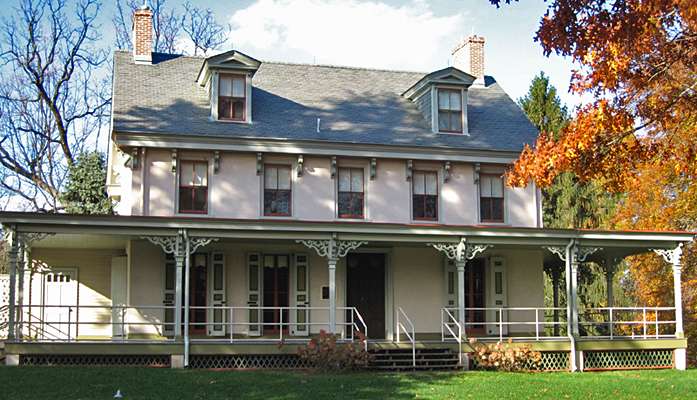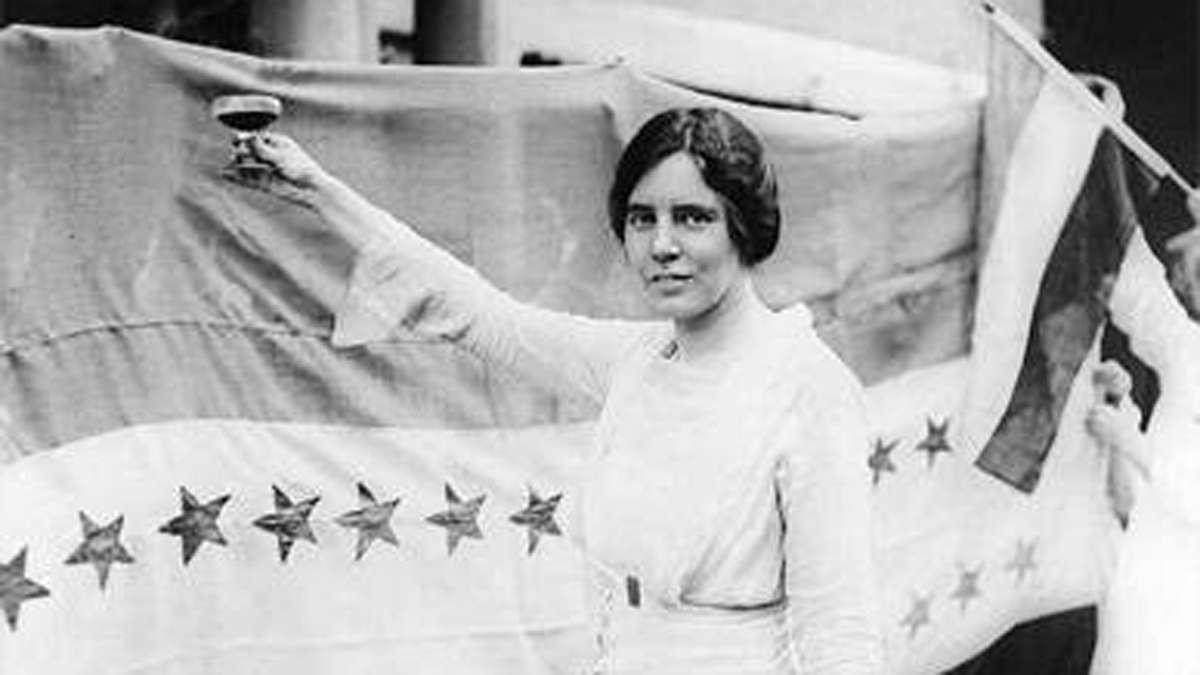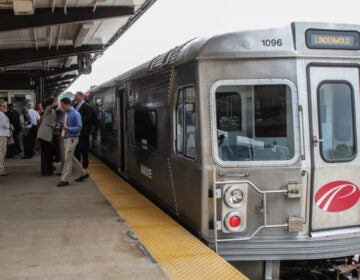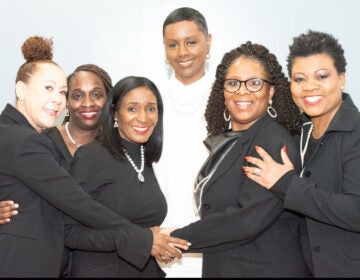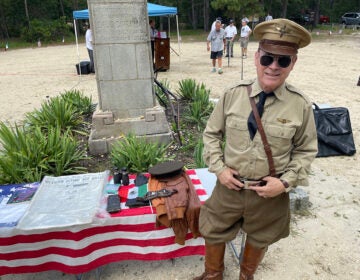Did you know a Mt. Laurel woman led the push for the 19th Amendment?
This August is the anniversary of the 19th Amendment, which gave women in America the right to vote. It was ratified on August 18,1920. But a lot of locals don’t know that the woman who lit up the American suffrage movement in the early 1900’s was born in Mount Laurel, New Jersey, outside of Philadelphia.
Why is Alice Paul’s name so little known today, compared to other icons of women’s rights?
“It’s not that her story has faded, it’s that it never got there,” says Lucy Beard, executive director of Mount Laurel’s Alice Paul Institute (API), which operates Paul’s original family home as a historical and educational facility. On Sunday, API holds its Women Rock the 19th Amendment event, for Women’s Equality Day on August 26.
Beard says Paul’s name doesn’t endure today partly because of the activist’s own determination not to focus a narrative on herself, and partly because Paul was inseparable from the movement.
“She was like the atmosphere that these people were moving in, so often she doesn’t stand out as a person separate from what was going on; she was what was going on,” Beard explains, chatting with NewsWorks from Paul’s old home.
And whether it was “modesty,” “contrariness,” or maybe the dreadful experience of knowing her mother learned about Paul’s torture in prison via the New York Times, “she did not encourage anyone to write about her,” Beard says.
Who was Alice Paul?
Paul was born on a 265-acre farm in Mount Laurel, at the time a tiny suburb of Moorestown, in 1885. Her Hicksite Quaker parents purchased the “Paulsdale” farm in 1883, and a dedication to equality infused Paul’s youth.
She was the oldest of four children, and she was passionate about education. She left Paulsdale for Swarthmore College in 1901, and earned her undergraduate degree in biology in 1905.
After graduation, Paul entered a new field known as social work, and took a post in a New York Quaker settlement house, where she met and was inspired by Jane Addams. In 1907, Paul finished off a master’s degree in sociology from the University of Pennsylvania, while also taking classes at Columbia.
Paul had no idea she would become a pillar of American democracy. She longed to be a professor: a tough enough hurdle for any woman in 1907. To achieve this at the time, she needed a doctorate from a European university. So on a very frugal budget after her father’s death during her college years, Paul crossed the Atlantic with hopes of a Swarthmore fellowship that would allow her to study at Germany’s University of Bonn.A fortunate disappointment
She was working in a Quaker settlement house in London when the devastating news came: she didn’t get her fellowship.
Her passionately chosen future was “effectively closed off,” Beard says. “The decision she made at that point really determined the rest of her life.”
Her teaching dreams thwarted, Paul happened on a London lecture about women’s voting rights, and “it galvanized her,” Beard says.
Paul embraced the suffragists’ cause there over the next few years, aligning herself with the radical work of British activist Emmeline Pankhurst.
“They would go to street marches padded up, expecting to get beaten by the police,” Beard says. “She could have gone another more moderate route, and she didn’t.”
Hunger strike horrors
To protest the brutal treatment they received when they were jailed, the women went on hunger strikes.
“This was a political methodology…They went into this with eyes wide open, knowing exactly what they were doing,” Beard emphasizes. They knew that the police couldn’t turn the protesting women into martyrs for the cause: “they were more dangerous dead than alive.” That meant force-feeding, a terrible ordeal in 1909.
In letters she would write later, Paul described the process. The women were tied into upright chairs, held down by up to four people, and their heads were bent back. Stiff rubber tubes the width of their fingers were forced up their noses and into their stomachs.”They would force anything they could get down that tube down through a funnel,” Beard says. Meanwhile, blood from the tube scraping the nose and throat would pour into the stomach, causing the women to vomit. But the worst part was when the authorities would return to force-feed the prisoner again, through nasal passages that were now agonizingly swollen.
A reporter from the New York Times visited, and, according to Beard, wrote that Paul’s screams resounded through the jail. Paul was horrified that her unsuspecting mother got the news by opening the paper in her parlor at home.
Back to America
After her eventual release and recuperation, Paul returned to the US in 1910, and instead of retiring from the cause, she took a leading role, bringing the English suffragists’ organizational and speaking tactics to the streets of Philadelphia while earning her doctorate in economics from the University of Pennsylvania.
The following years brought Paul to the national stage in Washington, DC, as WWI roiled the US and Europe. In late 1917, she joined suffragists picketing the front of the White House every day, a historical first.
Beard adds that these non-violent tactics would have major worldwide influence on figures like Gandhi and Dr. Martin Luther King, Jr.
The DC police had a problem on their hands, and finally began to arrest the picketers for “obstructing traffic.” When the women refused to pay the fines and went right back to the picket line, they were jailed, beaten, fed rotten food, sentenced to hard labor, and force-fed with nasal tubes when they went on hunger strikes.
Paul herself received a seven-month solitary confinement sentence, but was pardoned and released before the end of the year along with her compatriots.
States versus the Constitution
Beard explains that Paul brought an instrumental shift to women’s suffrage in America, where previous activists had taken a state-by-state focus that had earned women voting rights in just nine western states. Paul insisted that the only way forward was the Constitutional amendment giving all US women the right to vote, first introduced in Congress in 1878.
“They were working for their granddaughters,” Beard says of US suffragists before Paul arrived in DC. “They didn’t expect to get the right to vote in their lifetime. Alice Paul entered and said, ‘No, no, no, in our lifetime we will get the right to vote.’ And it happened.””She went head to head with Woodrow Wilson from 1914 to 1919,” holding him responsible for the success or failure of the amendment, Beard continues. Finally, in 1918, the President declared his support under the guise of suffrage as a “war measure” of necessary national pride.
Both houses of Congress narrowly passed the amendment in spring of 1919. Tennessee was the necessary 36th state to ratify it on August 18, and on August 26, Secretary of State Bainbridge Colby certified the ratification.
Paul had accomplished enough for a lifetime, but she went on to earn three law degrees and work for 55 years on the Equal Rights Amendment (ERA), which she authored, and which was introduced in Congress in 1923.
This amendment, stating that “equality of rights under the law shall not be denied or abridged by the United States or by any state on account of sex,” finally passed Congress in 1972. But only 35 of the required 38 states ratified it, and to this day, it has never been enacted.
Paul died in Moorestown, N.J. in 1977.
New Alice Pauls
So the work of the non-profit API continues today, though through education rather than political advocacy. The group, which sponsors an ERA website, purchased the original Paul family home in 1990 for its headquarters, and will celebrate its 30th anniversary next year, as one of the four percent of US National Historic Landmarks (according to API) to commemorate a woman’s work.
API’s ongoing offerings include a museum dedicated to Paul’s work and a wide range of educational, mentorship, and leadership programs for students both onsite and in local schools.
“We’re trying to create new Alice Pauls. We’re trying to create the next generation that can continue this kind of progressive change toward equality,” Beard says.
School history programs are full of male historical icons, but in a world that is half female, Beard insists, “we need to know that somebody besides Mom can be a hero.”
Sunday, Aug 24, 2014 The Alice Paul Institute will celebrate the anniversary with Women Rock the 19th Amendment in Mt. Laurel, N.J.
WHYY is your source for fact-based, in-depth journalism and information. As a nonprofit organization, we rely on financial support from readers like you. Please give today.



